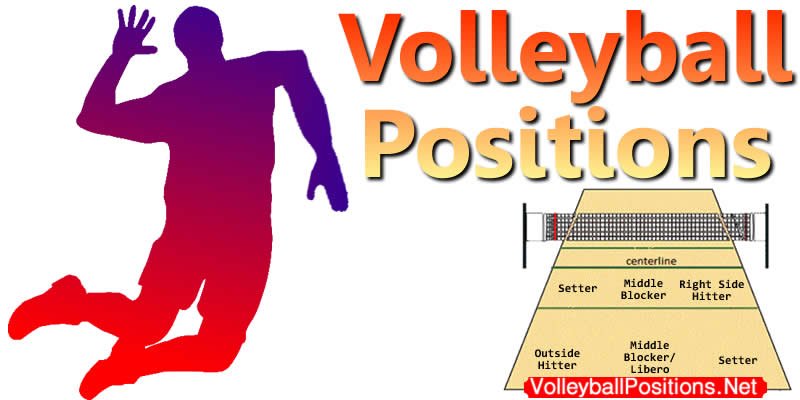To start the play the coin toss is made to determine which team is going to serve the ball first. A player from the team who is serving the ball throws the ball in the air and hits it in such a manner the ball is grounded in the opponent team’s court and the team who had served then scores a point if the opponent team cannot hit the served ball. The opposing team cannot use more than three consecutive contacts with the ball to return the ball to the opponent team’s court from over the net. For the ball to be aimed towards the designated setter, these contacts thus consists of first of the pass. Secondly is the set, done by the setter which is usually a over hand pass in which we use our wrists to push finger tips at the ball. As a result the ball’s trajectory is such that it aims towards one of the designated attacker who can hit the ball. Third is the attacker who spikes so that the ball is returned from over the net. The team that possesses the ball is said to be on offense. For such a set up designating the volleyball positions to the player is very important.
The team who is defending tries to prevent the attacker from grounding the ball in his/her court. The players jump to reach the height of the ball just a bit above the net and hits the ball in such a manner so that they can ground the ball in the opponent team’s court. If the ball is hit round or through the block then the players who are playing in defense they attempt to control the ball with the help of a dig. After a successful dig, this defensive team transits to offense. The players have their individual designated volleyball positions.
The rally continues this way, back and forth till any one of the team is able to ground the ball on the other team’s court or unless any fault is detected.
Some of the common faults are as follows:
-
Causing the ball to land on the ground outside opponent’s court
-
Catching the ball and throwing it
-
Two consecutive hits or any kind of contact with the ball is made by a same player which is generally termed as double hit.
-
Four consecutive contacts is made with the ball by a same teams
-
Touching the net during the rally which is termed as net foul
-
While serving the foot crosses the boundary line which is termed as foot foul
Positions in Volleyball:
Middle Blocker Position
What is middle Blocker?
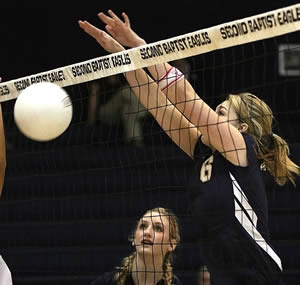 A player at the net, in the middle of the court takes this position of Middle Blocker when standing between two outside blockers during defense. The middle blockers strives to block the opponent team’s hitters wherever they maybe in the court. On offense, the middle blocker will hit the ball in quick sets or may also serve as a decoy and confuse the opponent team’s blocker if it is a good and well organised pass.
A player at the net, in the middle of the court takes this position of Middle Blocker when standing between two outside blockers during defense. The middle blockers strives to block the opponent team’s hitters wherever they maybe in the court. On offense, the middle blocker will hit the ball in quick sets or may also serve as a decoy and confuse the opponent team’s blocker if it is a good and well organised pass.
Characteristics:
-
Such positions in volleyball is given to the Tallest.
-
The player should be swift and flexible in his moves in the front of the net
-
Having skills of hitting quick tempo sets.
Important Attributes in Middle Blocker:
-
Strength
-
Swiftness
-
Height
-
Good blocking skills
-
Skills of reading the mind and eyes of the setter
Key Responsibilities of Middle Blocker
:
-
Blocking ( that is guarding the net)
-
Middle blocker should hit quick sets, 2’s, slides and shoots
-
The person should try and block everything that is he should play in middle front defense
Some of the main functions of the middle blocker:
-
The blocker should line up just in front of the opponent team’s setter before his team serves the ball to start the rally.
-
He / she should point out the opponent team’s hitters to his teammates
-
The person should follow the course of the hitters after the ball is served to watch closely where the hitter is headed to
-
This position holder reads the eyes of the setter to find out toward which direction she is going to send the ball
-
The person should block the hitters.
Advanced Skills:
-
Such volleyball position can be improvised depending upon the body position and the tendencies of the opposing setters.
-
Takes away the angles which are mostly used by opponent hitters.
Outside hitter Position
What is Outside Hitter?
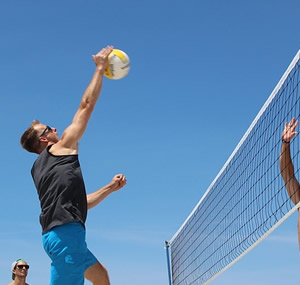 An outside hitter or left side hitter is a player who takes the position of front left side of the court, hits and blocks the ball from that position. On offense, thisposition holder is the main go-to-hitter and one of the main passers who pass the ball. He swings to hit the ball that approaches from outside of the court.
An outside hitter or left side hitter is a player who takes the position of front left side of the court, hits and blocks the ball from that position. On offense, thisposition holder is the main go-to-hitter and one of the main passers who pass the ball. He swings to hit the ball that approaches from outside of the court.
Key Responsibilities of the outside hitter:
-
He should hit at least four pipes
-
He should pass balls received from serves
-
He should pass free balls to setter
-
He should play from left side in the front and block the back rows
Characteristics:
-
Outside hitter is the most swift, flexible, dynamic and skilled players on the court
-
Such volleyball positions are given to players who are skilled to pass both overhead and arm balls and should be master in controlling the ball.
-
The outside hitter should have good defensive skills.
Some of the main functions of the outside hitter during the play:
-
Passes the ball which is received from the serve.
-
During defense the person calls out for the hitters on the other side of the net
-
Follows the movements of the hitters to watch out for the one coming her way
-
On offense she runs the play called by the setter
-
These volleyball positions are given to players who sets the block in such a way that the middle blocker can keep close to her
-
She should have the ability of making good swings irrespective of the fact that whether the set is good or bad
Advanced Skills:
-
Defensive sprawl.
-
Taking speed off the ball.
-
Angle shots that are both line and hard.
-
Off-speed rolls shots to campfire.
Libero Position
What is Libero?
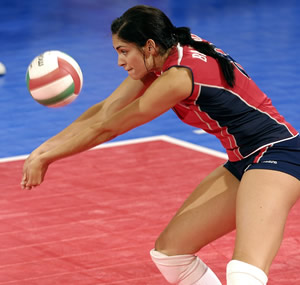 Libero are such positions in volleyball who plays in defense from the back row and wears and opposite coloured jersey. He specialises in passing the ball received from pass, setting, digging, and free ball passing. He/ she is mainly a defensive specialist. Such positions in volleyball were added to the game in 1999 to improvise the rally and digging skills and make the game more exciting.
Libero are such positions in volleyball who plays in defense from the back row and wears and opposite coloured jersey. He specialises in passing the ball received from pass, setting, digging, and free ball passing. He/ she is mainly a defensive specialist. Such positions in volleyball were added to the game in 1999 to improvise the rally and digging skills and make the game more exciting.
The libero is not regulated by the rules of rotation and he remains in the game all the time. He / she takes the volleyball positions of the middle blocker when they rotate to the back row and they cannot again rotate back to the front row. The person is chosen as a libero in the very beginning of the match or the tournament and no one can replace the libero for the entire match or tournament once chosen unless the libero is injured. If the libero is injured he/she is replaced by a player not present in the court. But then the new player should remain the libero for the rest of the tournament.
Key Responsibilities of the Libero
-
Digging and serve receive passing
-
When the setter receives the first contact it is the responsibility of the libero to handle the ball
-
Free ball placement
Characteristics:
-
One of the most skilled defensive player is given such volleyball position.
-
Master in the fundamentals digging, setting, passing, serving
-
He plays in the back row only
-
Marvellous in reflexes
-
One of the shortest and swift players of the team is made the libero
Advanced Skills:
-
In each of the rally the libero calls out for the opponent hitters
-
Defensive sprawl
-
Setting the deft
-
Placement of the free ball
Setter Position
What is a setter?
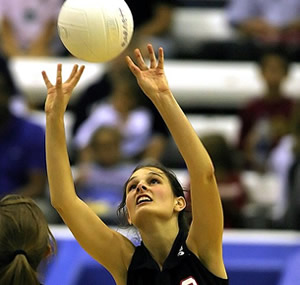 Setter is one of the volleyball positions whose main responsibility is to hit the ball in second contact and strike the ball to the teammate for further attack. The person is totally In charge of the offense. The setter decides when and who should get the ball. It is a very important position in this game. No matter how well skilled are the hitters but if there is not any good setter who can deliver good ball to hit then the team’s chances to lose will be maximum and they will have not have a good offense.
Setter is one of the volleyball positions whose main responsibility is to hit the ball in second contact and strike the ball to the teammate for further attack. The person is totally In charge of the offense. The setter decides when and who should get the ball. It is a very important position in this game. No matter how well skilled are the hitters but if there is not any good setter who can deliver good ball to hit then the team’s chances to lose will be maximum and they will have not have a good offense.
What does the setter do during the play?
-
This volleyball position holder should make sure that before the serve all his teammates have properly lined up and there is no overlapping
-
Setter should continuously communicate with the other hitters to know what are the schemes that are to be followed or the play that they should be running and what set that they will be hitting
-
After the serve is made by the opponent the setter should have his eyes fixed on the ball and should move in the perfect position swiftly to make a good pass, at the net, from right of the middle of the court
Key Responsibilities of such positions in volleyball:
-
In each offense set, the ball should be set on the second contact.
-
The team’s offense is directed by the setter
-
In front and back rows the setter should play in defense from the right side.
-
The opponent team’s outsider hitter should be blocked by the setter
Advanced Skills:
-
Setting the jump
-
Dumping
-
Watching the opponent team’s blockers closely and following their steps
-
With primary accuracy the hardest set is organized by the setter
Opposite Hitter Position
What is Opposite Hitter?
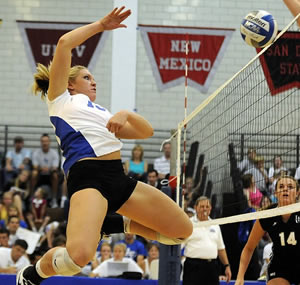 In the rotation the hitter is placed in such volleyball positions just opposite to the setter and this is how it gets its name. The opposite hitter plays from the right side in the front and back rows. When the setter is unavailable, the opposite hitter does the setter’s job of setting due to his location in the court.
In the rotation the hitter is placed in such volleyball positions just opposite to the setter and this is how it gets its name. The opposite hitter plays from the right side in the front and back rows. When the setter is unavailable, the opposite hitter does the setter’s job of setting due to his location in the court.
What does the Opposite do during the play?
-
Before the serve, the opposite calls out for the opponent hitters.
-
The block should be set on the outside hitter so that the middle can close to the opposite hitter.
-
If the setter cannot get to the dig which comes quickly then the opposite hitter should be prepared for that
-
If the opposite hitter does not get the set then he/she should cover the hitter.
Key Responsibilities of such positions in volleyball:
-
From both the front and back rows the back sets should be hit.
-
When the setter receives the first contact the ball should be handled properly
-
The opposite hitter plays right from front defense.
-
The outside hitter of the opponent’s team should be blocked.
Advanced Strategies:
- Seam hit.
- Lined up and hard angled shots.
- For tools, swinging high to fingertips.
- Off-speed roll shots to the campfire.
Defensive Specialist Position
Who is Defensive Specialist?
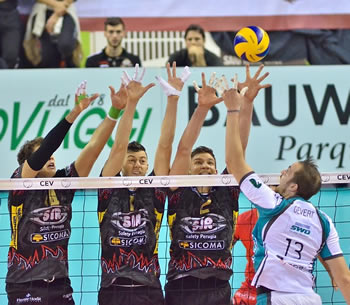 Such volley ball positions are placed in the back row specialises in defense, free ball passing, digging, ball control etc.
Such volley ball positions are placed in the back row specialises in defense, free ball passing, digging, ball control etc.
Key Responsibilities of such positions in volleyball:
-
Handles the ball when the setter receives the first contact
-
He places the free ball
Advanced Skills:
-
Calls out the opponents hitters during each rally.
-
Sets the deft
-
Sprawl defences
-
Checks the speed and force of the ball.
Characteristics:
-
This is the second best defensive player in the team who plays in the back row that is behind the libero.
-
Such volley ball positions is the semi master of the fundamentals of volleyball like digging, passing, serving and setting.
-
One of the quickest and shortest players of the team
-
Such positions in volleyball is actually not required if the outside hitter is equally capable for the position and can perform the functions of the defensive specialist.
Formation Positions:
4-2 Positions
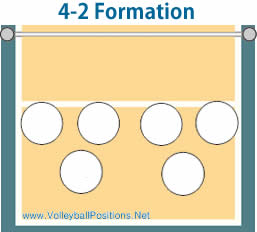 This type of offense includes 4 attackers and 2 setters. To avoid confusion on the ground, less experienced team use this offense. The two setters take the volley ball positions in front and back rows respectively and which are just opposite tom each other. This arrangement helps the two attackers to attack from the front row. The setter then dumps the ball. 4-2 formations are the simplest and the team using it thus sets a basic set for the opponent team. As it is the simplest the beginners mainly use this formations and later on after gaining some experience they can easily take up any of the higher formations.Apart from this the negative aspect of this formation is there are some limitations that it imposes on our offense. As the setter is generally the team leader some think that two setter takes away from the team.
This type of offense includes 4 attackers and 2 setters. To avoid confusion on the ground, less experienced team use this offense. The two setters take the volley ball positions in front and back rows respectively and which are just opposite tom each other. This arrangement helps the two attackers to attack from the front row. The setter then dumps the ball. 4-2 formations are the simplest and the team using it thus sets a basic set for the opponent team. As it is the simplest the beginners mainly use this formations and later on after gaining some experience they can easily take up any of the higher formations.Apart from this the negative aspect of this formation is there are some limitations that it imposes on our offense. As the setter is generally the team leader some think that two setter takes away from the team.
5-1 Positions
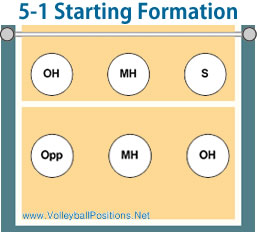 This formation includes the use of 1 setter and 5 attackers in the volleyball positions. Here the secondary setter is replaced by an opposite hitter and the hitter always plays opposite the setter in the ground. In this formation the setter dumps the ball in half the rotations and then the three front row attackers sets the ball on for the rest three rotations. Depending on whether the setter is in front row or back row, the setter can set any possible set. In this formation, one setter is made the team leader. And as there is only one setter it is quite suitable, as the setting is not changed any further and it avoids confusion. One setter sets differently the balls and it does not match with the setting of some other setter and creates a different feel for the attackers who are who are particularly use to one setter. The negative aspect of this formation is that, to set the ball, the setter needs to transit from defense.
This formation includes the use of 1 setter and 5 attackers in the volleyball positions. Here the secondary setter is replaced by an opposite hitter and the hitter always plays opposite the setter in the ground. In this formation the setter dumps the ball in half the rotations and then the three front row attackers sets the ball on for the rest three rotations. Depending on whether the setter is in front row or back row, the setter can set any possible set. In this formation, one setter is made the team leader. And as there is only one setter it is quite suitable, as the setting is not changed any further and it avoids confusion. One setter sets differently the balls and it does not match with the setting of some other setter and creates a different feel for the attackers who are who are particularly use to one setter. The negative aspect of this formation is that, to set the ball, the setter needs to transit from defense.
6-2 Positions
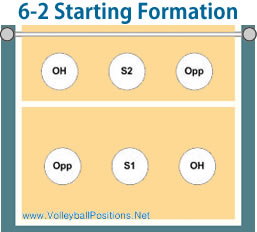 A 6-2 formation includes 6 attackers and 2 setters in the volleyball positions. In this formation, the setter in the back row is always allowed to set the ball. The front row setter is only made the hitter.This formation is useful when the setters are also very good attackers and their coach also wants to exploit that talent. But unfortunately this formation has the disadvantages of both the 4-2 and 5-1 formations. The setter lacks the leadership quality as he has to transit from the defense all the time.
A 6-2 formation includes 6 attackers and 2 setters in the volleyball positions. In this formation, the setter in the back row is always allowed to set the ball. The front row setter is only made the hitter.This formation is useful when the setters are also very good attackers and their coach also wants to exploit that talent. But unfortunately this formation has the disadvantages of both the 4-2 and 5-1 formations. The setter lacks the leadership quality as he has to transit from the defense all the time.
Related Videos: (Expand)


